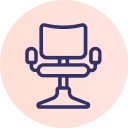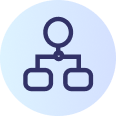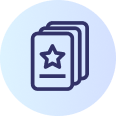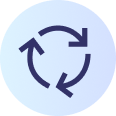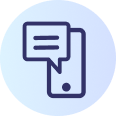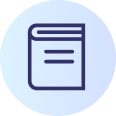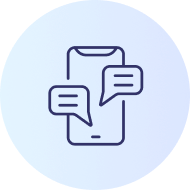A phone call to your dental practice is an early touchpoint that influences the entire patient experience. How do you handle missed calls from patients? Clearly, if you want to grow your practice, there is little margin for error. If a missed call is not returned, you may lose a prospective patient. Missed calls lead to lost opportunities.
However, with AI missed call text back software, dental practices and other appointment-based businesses can ensure they capture every call. This way, they are less likely to lose a patient or fail to gain a prospective client due to a missed or mishandled call.
What is missed call text back software?
Missed call text back software immediately sends a preset automated text message in response to missed calls. These preset messages can be customized based on the patient’s needs.
Missed call text back software goes by many names:
- Virtual Receptionist
- Front Desk Assistant
- Patient Texting Platform
- Patient Messaging Software
- Two-Way Messaging
- AI Chatbot
- Call Tracking Software
- SMS Texting Software
How does missed call text back software work?
When a customer calls, an automated message thanks them for their call and invites them to opt into text messaging. When they opt in, the software immediately sends a text message to the patient, acknowledging their call and providing relevant information or instructions. This ensures that even if the call is missed, the patient feels attended to and valued. It captures every customer call, ensuring that no call goes unanswered.
The initial SMS however, is not the end of the interaction. Missed call text back software with AI continues the conversation. The AI asks the patient what they want to do and provides a way for them to do it.
- Make an appointment
- Get dental insurance information
- Access the payment system
- Cancel or reschedule an appointment
- Learn about services and policies
Most solutions marketed to the dental industry are not able to engage in complex human-like conversations. Because of this, they don’t allow the caller to perform the task for which they called.
Full service conversational AI software trained on actual conversations with customers is what sets missed call text back software apart from a menu-driven chatbot.
The benefits of missed call text back software
Below, we’ll explore five key benefits of AI-powered missed call text back software and how it can transform your business operations.
- Prevention of prospective patient loss
- Support for front desk staff
- Optimized patient scheduling
- Improved overall patient experience
- Advanced analytics
Prevention of prospective patient loss
If you can improve your dental patient attrition from 40% to 20%, that is the equivalent of gaining 33 new patients a month!
Missed calls can result in prospective patients seeking alternative dental practices. Missed call text back software reduces this risk by instantly reaching out to patients through automated text messages. By providing prompt responses and addressing their needs, auto missed call text back software ensures that prospective patients feel valued and are more likely to choose your dental office over competitors.
Support for front desk staff
Front desk staff often face the challenge of managing a high call volume, which can be overwhelming and lead to missed calls. AI-driven missed call text back software acts as a reliable assistant, handling incoming calls and sending immediate text messages, reducing the burden on staff and improving overall efficiency. This allows front desk staff to focus on other critical tasks and provide better patient service. Missed call software can also be used in call centers that serve multiple practices.
Patient call automation also provides an important staffing benefit. In a survey by NexHealth, 42% of practices ranked ‘Staffing the Office’ as their biggest concern for 2023. If you can increase productivity by automating a significant number of calls, you can operate with a smaller team. In addition, providing your team with smart technology makes their jobs easier. Employees who enjoy their jobs are more likely to stick with their employer.
Optimized patient scheduling
Efficiently managing appointment slots plays a vital role in maximizing production for dental practices. Advanced AI software offers convenient 24/7 self-service booking through text. Patients can easily book appointments at their convenience, eliminating the need for back-and-forth phone calls. The software syncs with booking systems and practice management software to eliminate duplicate work and streamline the scheduling process.
Improved overall patient experience
In today’s digital age, patients expect convenience and instant access when engaging with a practice. Missed call text back software meets these expectations. Anytime self-service booking enhances patient satisfaction and improves the overall patient experience. This helps your dental practice grow by helping to retain existing patients and making it more likely that prospective patients that call your dental office book their first appointment.
Advanced analytics
The most successful practices use dental communications software with real time analytics. If you’re evaluating dental practice two-way messaging software, make sure it provides analytics that allow your team to review automated calls, read chat transcripts and monitor booking conversion rate. This valuable data helps staff gain insights into patient inquiries, frequently asked questions, and areas for improvement. With analytics, dental practices can continuously refine their communication strategies and enhance patient satisfaction.
Experience TrueLark’s missed call text back software
TrueLark’s AI-driven missed call text back software streamlines the way dental practices and other appointment-based businesses handle calls, and ensures that no opportunity is missed. By capturing every call, sending immediate text messages, and providing convenient self-service booking, our software solution improves both efficiency and the patient experience.
Embrace the power of missed call text back software and never miss a call again. Book a TrueLark demo today.
Originally published July 23, 2023. Updated January 27, 2025.

